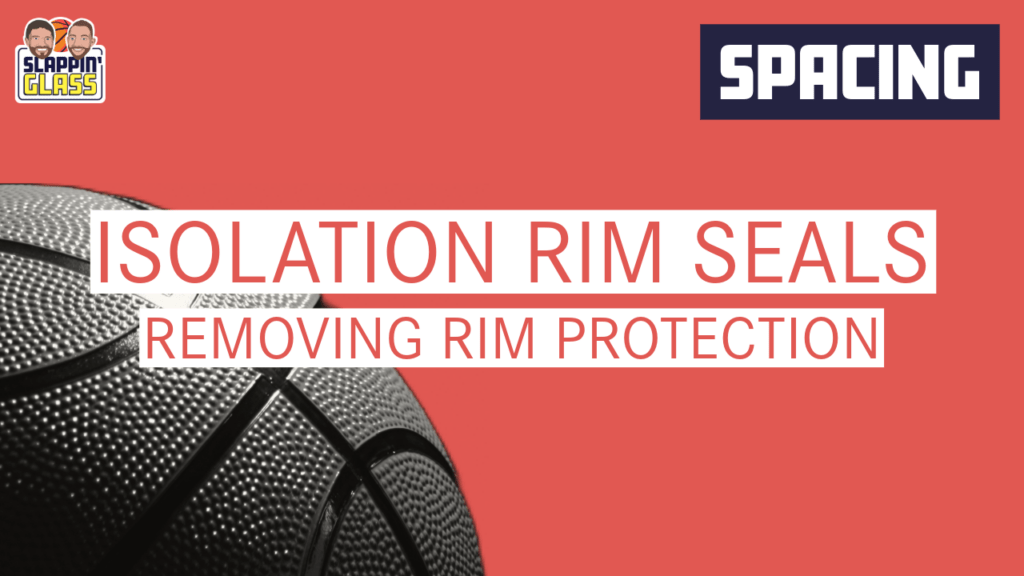In recent seasons, we’ve seen a rise in the success of offenses led by diminutive guards who thrive on pushing the pace and breaking down defenses with dribble penetration—perhaps best exemplified by Coach Tuomas Iisalo’s (now with the Memphis Grizzlies) former teams featuring TJ Shorts at Telekom Bonn and Paris. Paris has continued this success and doubled down on the small-guard trend by adding Nadir Hifi into the mix.
When studying Paris and other clubs that build their offenses around small guards, we’ve enjoyed analyzing the various strategies they use on both ends of the floor—maximizing their guards’ strengths while mitigating their primary weakness: a size disadvantage.
One standout aspect is the savvy screening and sealing by the bigs during isolations, using well-timed seals to neutralize potential rim protection…
Dunker Spot Decisions
As mentioned above, a key feature of an offense led by a diminutive guard is their ability to capitalize on their speed to consistently break the paint and put pressure on the defense. However, while their quickness and agility allow them to break down most defenders off the dribble on the perimeter, these physical advantages are often mitigated in the paint, giving way to size and length.
While offenses have become adept at creating space on the perimeter to open gaps for dribble penetration, equal consideration must be given to supporting the guard once they break the paint. Teams need to find ways to create scoring opportunities around a guard who faces challenges finishing or passing over size in a confined space.
Perhaps the most common spacing around perimeter isolations is positioning the big in the dunker spot, which subsequently places a defensive presence at the rim…
Anticipating this help, the offense faces the challenge of finding solutions tailored to their team, with the goal of assisting the guard in either scoring at the rim or finding passing options against the help rotations.
One of the original benefits of positioning the big in the dunker spot with a corner filled behind the penetration is the ability of spacing to stress the help rotations on the drive. When the rim protector steps up on penetration, the ballhandler’s read becomes either to throw the lob or, if the second help “cracks back” on the dunker {🔒}, to spray the ball out to the shooter in the corner.
This simple solution relies heavily on the elite athleticism of the big in the dunker spot to catch lobs from a standstill, as well as the ballhandler’s size to see over defenders and deliver passes in tight spaces. But for those of us coaching a roster of mere mortals—especially with undersized guards—what’s the alternative to clanked floaters or deflected passes?
How about having your ground-bound center eliminate the rim protector altogether with a “seal out” or “screen in”?
Zooming In: Understanding that the guard is likely to beat their defender off the dribble, the big should focus on reading their own defender—either sliding under to seal them out of the help (as shown above) or screening in to eliminate the help (see first GIF ⬆️).
While perimeter isolation and spacing strategies like the dunker spot can create scoring opportunities, teams without elite size must get creative—using seals and screens from their bigs to support the guard’s penetration and eliminate rim protection, opening up more effective scoring and passing options.
In the past we have highlighted a few other interesting ways teams space and utilize a big at the rim, such as:
- Transition Seals {🔒}
- Playing with Multiple Bigs in Transition {🔒}
- Solving “Dead Corners” {🔒}
- Inverted Post Ballscreens {🔒}
Today’s installment of rim seals adds another tactic that a coach can use when thinking about spacings that help create another advantage for a smaller guard. For much more, SG+ Members can enjoy this week’s newest breakdown on SGTV…
